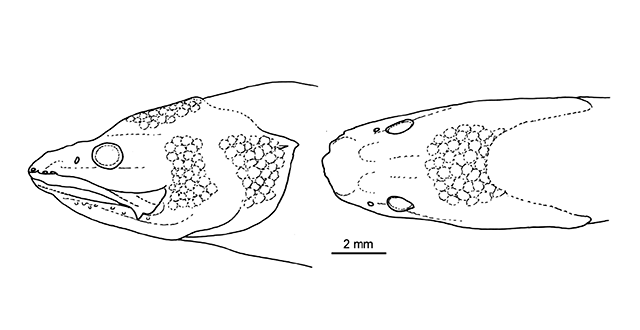| Bythitidae (Livebearing brotulas) |
| 3.05 cm SL (male/unsexed) |
|
benthopelagic; marine; depth range 11 - 14 m |
| Western Central Pacific: Endemic to Fiji. |
|
Dorsal soft rays (total): 62-70; Anal soft rays: 58-61; Vertebrae: 45-47. This species is distinguished by the following set of characters: vertebrae 11-12 + 34-35 = 45-47; D 62-70, A 58-61, pectoral-fin rays 14, caudal-fin rays 6; anterior dorsal fin ray above vertebra 7-8; anterior anal fin ray below dorsal fin ray 14-15; anterior anal fin ray below vertebra 14; small forward-curved spine at lower angle of preopercle; head with separated scale patches on cheeks, operculum and occiput; papillae on lower jaw only; posterior mandibular pores absent; no lower preopercular pores; minute palatine teeth in single row; otolith length to otolith height, 2.0, otolith length to colliculum length, 2.4; male copulatory organ with 3 small papillae at base of genital hood (Ref. 88975). |
|
|
Data deficient (DD); Date assessed: 16 August 2019 Ref. (130435)
|
| harmless |
Source and more info: www.fishbase.org. For personal, classroom, and other internal use only. Not for publication.

